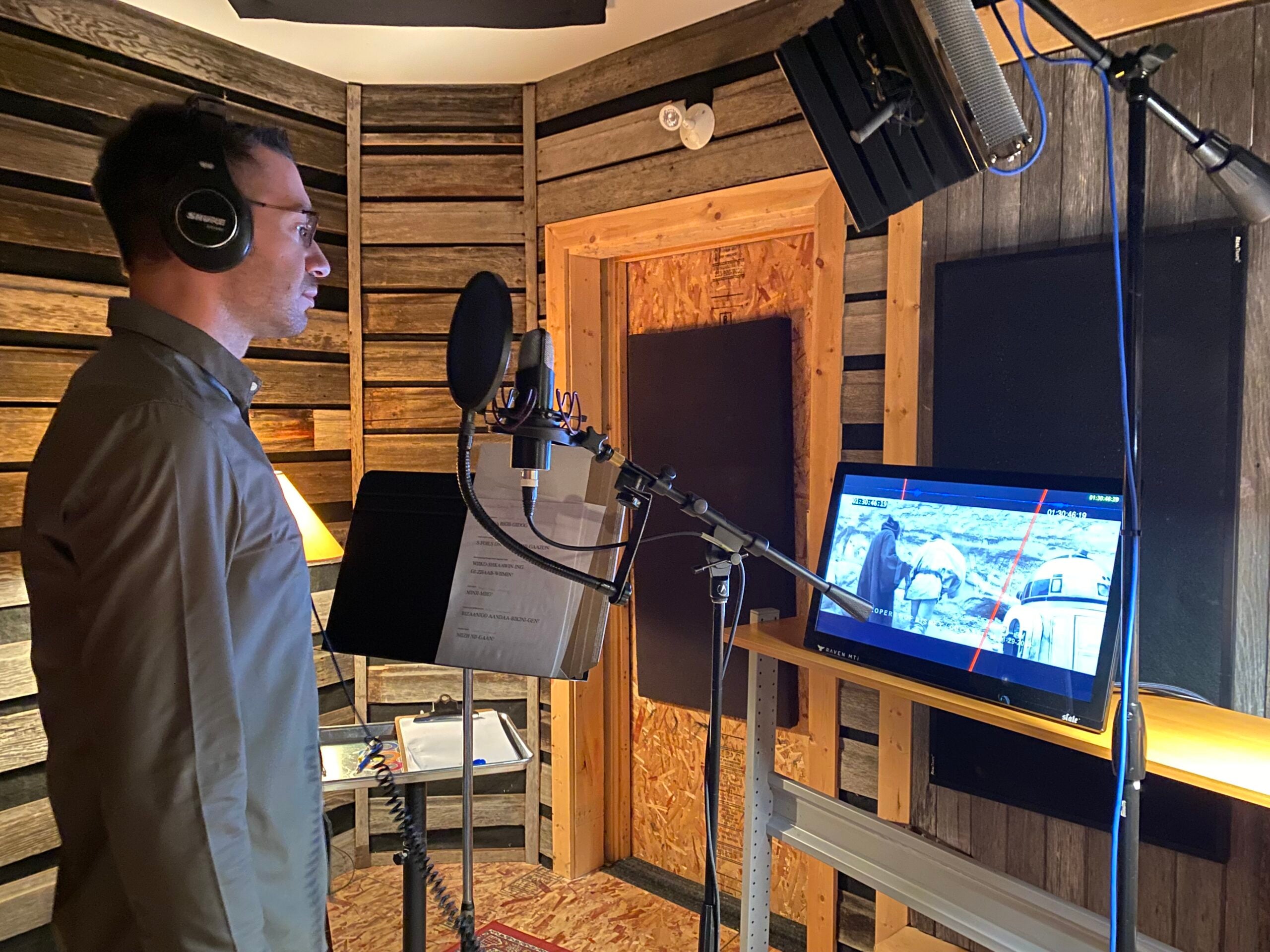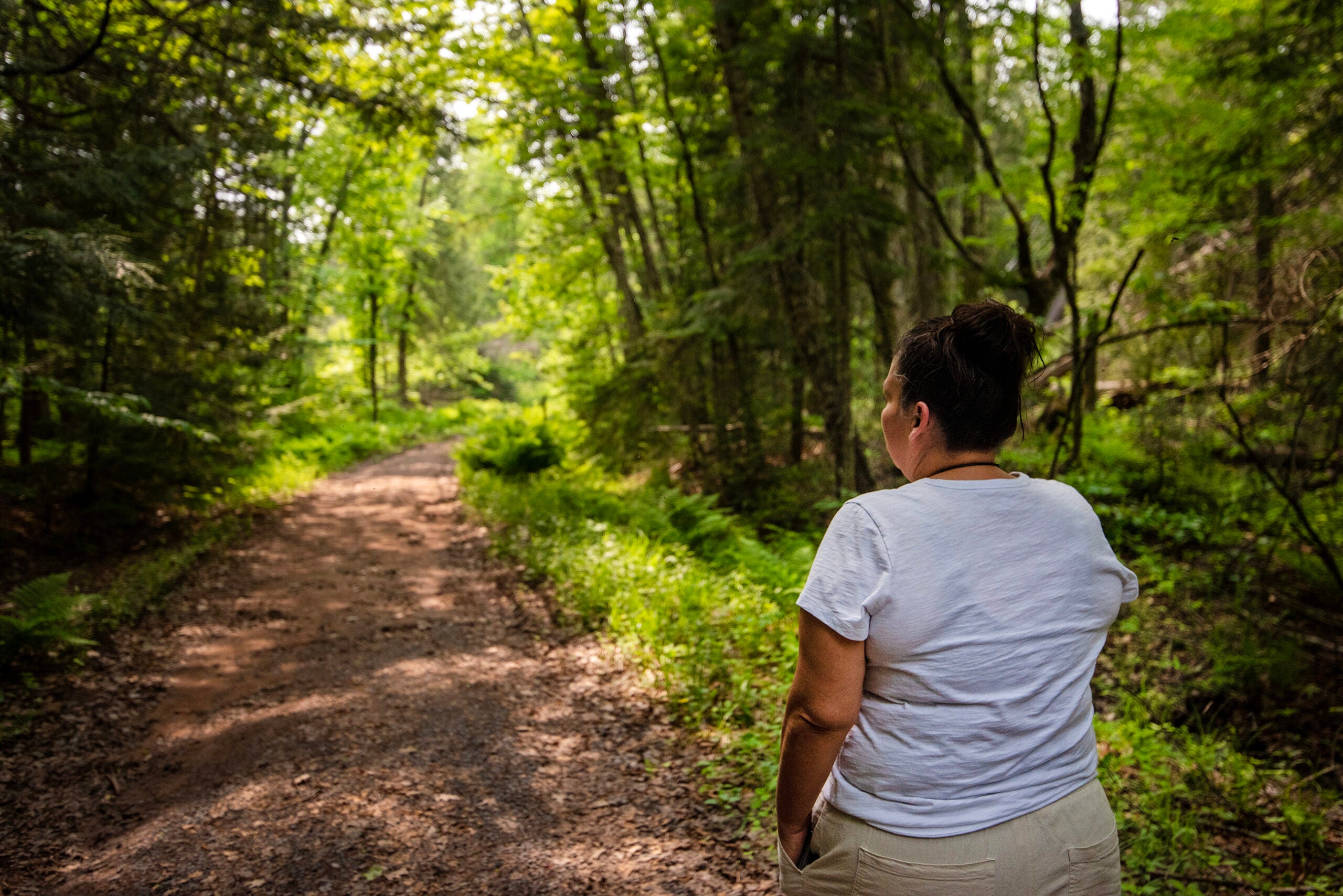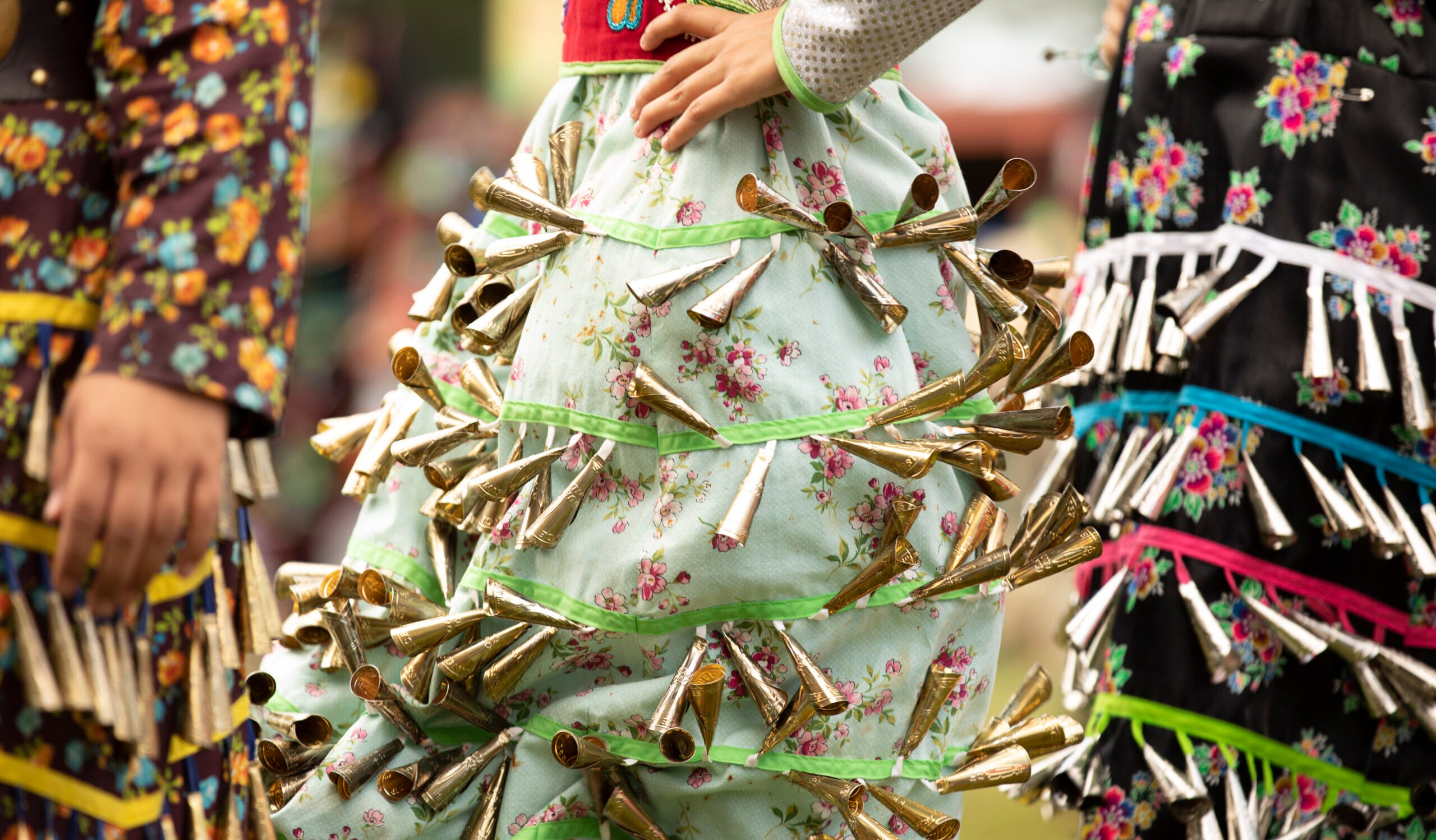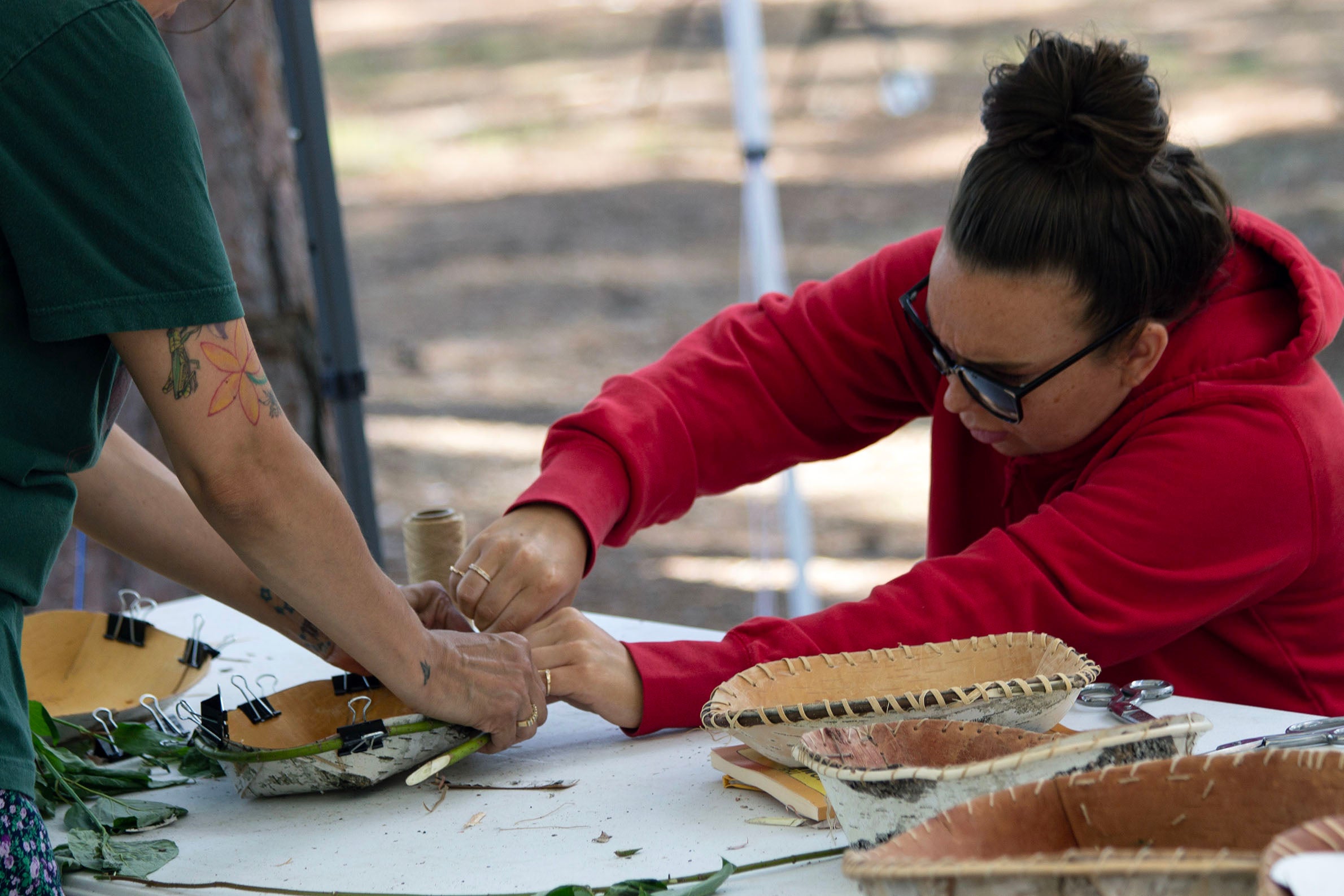The Force is with Niigaanii-Animikii Inini Kalvin Hartwig.
The filmmaker and Anishinaabe language-culture coordinator for the Red Cliff Band of Lake Superior Chippewa will be featured as a voice actor in an Ojibwe dubbing of Disney’s “Star Wars (Anangon Miigaading): A New Hope.”
“I’ve been a Star Wars fan since I was a kid, so this is checking all the boxes for me,” Hartwig said.
The project is part of a language revitalization effort in support of reconciliation. Hartwig, who lives in Washburn, said he’s incredibly honored to be a part of this historic moment for the first Star Wars film dubbed in Ojibwe.
“This is, I hope, just one key milestone in part of a longer journey to fully revitalize the Ojibwe language,” Hartwig said. “I hope young people and adults alike watch this film and are inspired to either continue learning the Ojibwe language or to start their Ojibwe learning journey.”
The Anishinaabemowin or Ojibwe version of the film debuts Aug. 8 at Centennial Concert Hall in Winnipeg in the Canadian province of Manitoba. The movie will also be screened in select markets, including Marcus Theatres locations in Wisconsin beginning Aug. 30. The film will be streamed on Disney+ at a later date.
“Star Wars: A New Hope” originally debuted in 1977. The film has since been translated into more than 50 languages, according to the BBC. A team previously helped translate the movie’s script into the Navajo language in 2013.
News with a little more humanity
WPR’s “Wisconsin Today” newsletter keeps you connected to the state you love without feeling overwhelmed. No paywall. No agenda. No corporate filter.
Hartwig said he first saw the film in a Michigan movie theater where he grew up as a member of the Sault Ste. Marie Tribe of Chippewa Indians. He will voice the character Red Leader, who was performed in the original film by the late Gordon Drewe Henley.
He first learned of auditions being held for the film’s Ojibwe version through a post on social media. Hartwig applied to audition and received a call asking him to record himself speaking lines from the film in Ojibwe for several different characters.
“Doing my best Ojibwe pronunciation, I sent these recordings in,” Hartwig said. “Then, I heard back good news, asking me for a second audition.”
Hartwig said it wasn’t long into the second audition before he was given the role of Red Leader. The Ojibwe version of the film was recorded over 10 days in early May in Winnipeg, and the final product was mixed together at Skywalker Sound in California. Hartwig spent a few days in Winnipeg, but it took him roughly an hour to record about 40 lines for Red Leader.
“Red Leader is one of these rebels leading the charge against the Death Star,” Hartwig said. “I am very honored to give the Ojibwe voice to Red Leader.”
He draws parallels between the rebels in the film, who are fighting the Galactic Empire, and his Ojibwe ancestors. He noted they helped keep the Ojibwe language alive despite federal policies and intentional efforts to extinguish their identity.
“Thankfully, we had folks, rebels in themselves, who kept our language underground, kept our ceremonies underground, even when it was illegal, even when it was dangerous to do so, and fought on,” Hartwig said. “Their sacrifices have helped us so much, and we are so fortunate to still have our language — this gift from the Creator. It’s our responsibility to carry it forward for our future generations.”
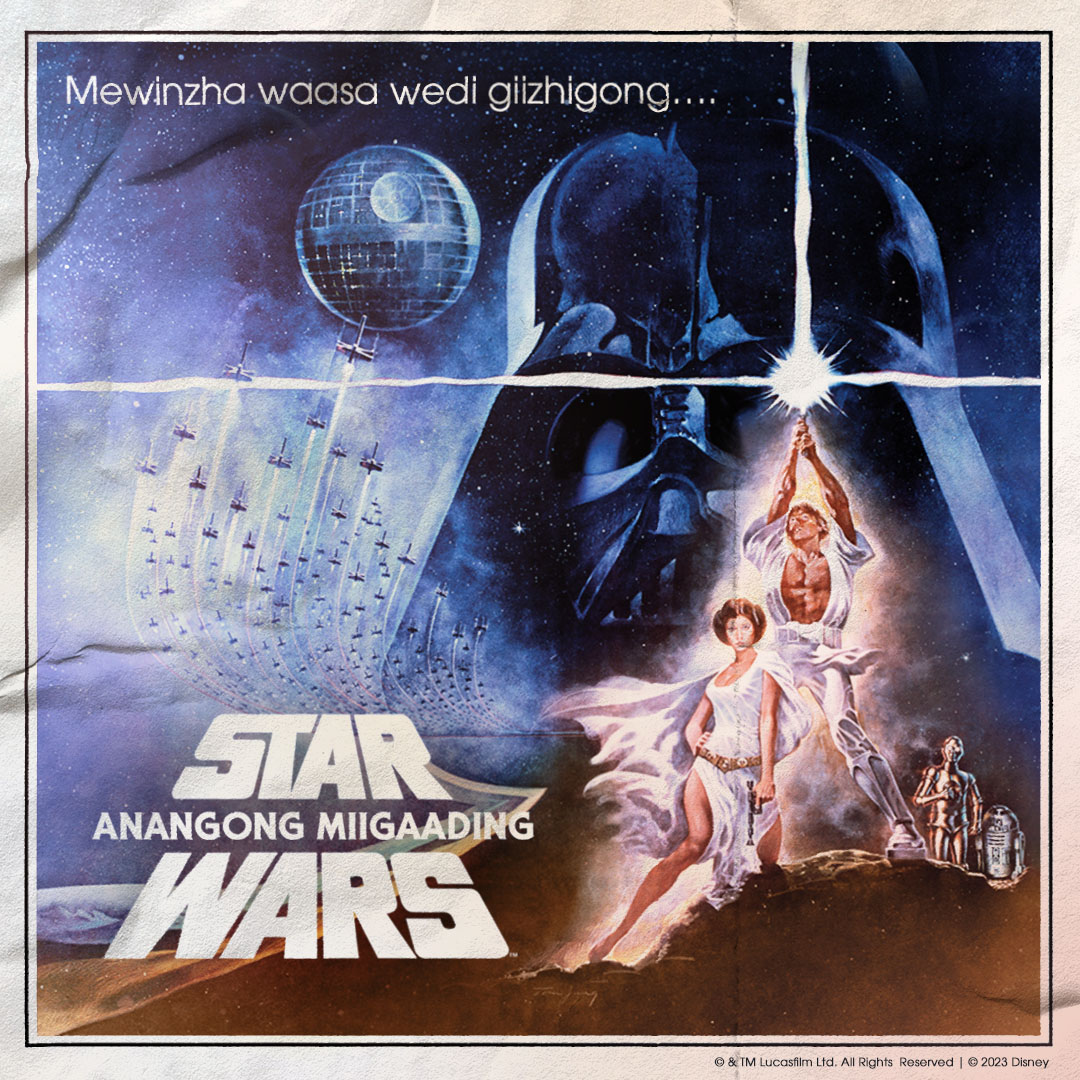
As of 2010, census estimates show almost 8,400 people could speak Ojibwe across North America. In the United States, the Midwest Indigenous Immersion Network estimates roughly 60 or fewer people remain who speak Ojibwe as their first language.
Hartwig wasn’t taught Ojibwe while he was growing up, and no one in his family had been fluent in the language for at least four generations. He began learning to speak Ojibwe through books and courses at Bay Mills Community College in Michigan. More recently, he’s been taking courses at the Lac Courte Oreilles Ojibwe University in Hayward.
As the Red Cliff tribe’s language-culture coordinator, Hartwig is helping to revitalize the Ojibwe language. He coordinates programming and events that bring the Ojibwe language, culture and traditional values to the community. He’s also supporting other tribal officials as they work to bring an Ojibwe Immersion Program at the Bayfield School District for kids attending kindergarten this fall.
“I envision not only keeping our language alive, but strengthening it, revitalizing it, growing it,” he said.
Hartwig said he’s grateful to the language instructors he’s worked with both on and off the project in addition to Disney, Lucasfilm, the University of Manitoba and others involved in making the Ojibwe version of the film a reality.
Hartwig will attend the film’s premiere in Winnipeg on Thursday. He’s hopeful that the movie will generate enough interest that Disney will select Ashland as one of the locations where the film will be screened.
Wisconsin Public Radio, © Copyright 2025, Board of Regents of the University of Wisconsin System and Wisconsin Educational Communications Board.

